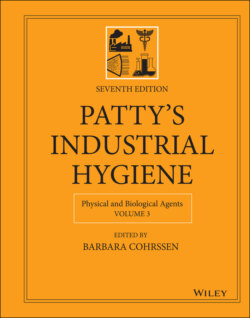Читать книгу Patty's Industrial Hygiene, Physical and Biological Agents - Группа авторов - Страница 83
4.1 Class 1
ОглавлениеClass 1 is considered an “eye‐safe,” no‐risk grouping. Most lasers that are totally enclosed (for example laser compact disc recorders) are Class 1. No safety measures are required for a Class 1 laser. Class 1 lasers are frequently referred to as “eye‐safe” lasers. In the past few years, a new, conditional class has been introduced: Class 1M, which is effectively “eye‐safe” unless the beam is directly viewed with optical instruments. Two conditions exist whereby optical instruments can collect more energy and increase the ocular hazard. Condition 1 is the most obvious and the most serious case: where a telescope or binocular is placed in the collimated laser beam and can introduce far more energy into the eye if there is a retinal hazard, or concentrate the energy on the cornea for laser wavelengths outside the retinal hazard region. The second condition is where a hand magnifier or jeweler's eye loupe is used to examine a highly diverging laser beam (generally emitted from an optical fiber) and recollimate the beam so that it can be concentrated on the cornea or focused on the retina. This is a rather unrealistic viewing condition except when service technicians examine the tip of an optical fiber. The safety criteria for this second viewing condition were re‐examined by standards committees, such as IEC TC76 in 2014, and it was concluded that the applicability should be limited to unfiltered microscope (eye‐loupe) optics used when servicing optical‐fiber communications systems.
